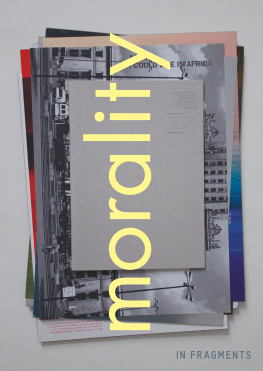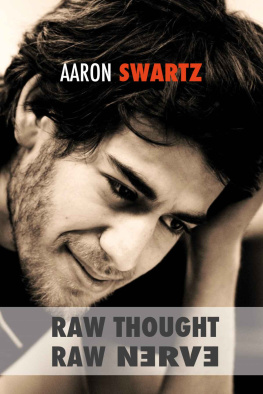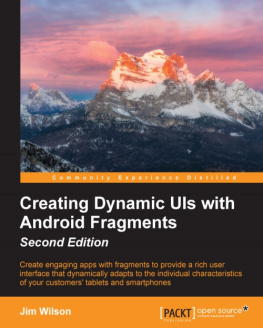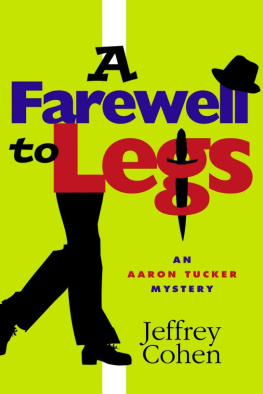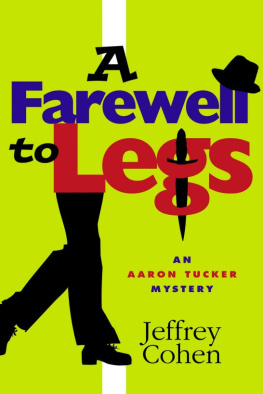Schuster Aaron - Morality In Fragments
Here you can read online Schuster Aaron - Morality In Fragments full text of the book (entire story) in english for free. Download pdf and epub, get meaning, cover and reviews about this ebook. year: 2012, publisher: Witte de Withe, genre: Romance novel. Description of the work, (preface) as well as reviews are available. Best literature library LitArk.com created for fans of good reading and offers a wide selection of genres:
Romance novel
Science fiction
Adventure
Detective
Science
History
Home and family
Prose
Art
Politics
Computer
Non-fiction
Religion
Business
Children
Humor
Choose a favorite category and find really read worthwhile books. Enjoy immersion in the world of imagination, feel the emotions of the characters or learn something new for yourself, make an fascinating discovery.
- Book:Morality In Fragments
- Author:
- Publisher:Witte de Withe
- Genre:
- Year:2012
- Rating:4 / 5
- Favourites:Add to favourites
- Your mark:
- 80
- 1
- 2
- 3
- 4
- 5
Morality In Fragments: summary, description and annotation
We offer to read an annotation, description, summary or preface (depends on what the author of the book "Morality In Fragments" wrote himself). If you haven't found the necessary information about the book — write in the comments, we will try to find it.
Morality In Fragments — read online for free the complete book (whole text) full work
Below is the text of the book, divided by pages. System saving the place of the last page read, allows you to conveniently read the book "Morality In Fragments" online for free, without having to search again every time where you left off. Put a bookmark, and you can go to the page where you finished reading at any time.
Font size:
Interval:
Bookmark:


MORALITY
IN FRAGMENTS
WITTE DE WITH
CENTER FOR CONTEMPORARY ART
CONTENTS
INTRODUCTION: Whats Morality?
Morality is a multi-faceted project that was presented at Witte de With Center for Contemporary Art (Rotterdam) in 2009 and 2010.
While there are certain moral principles that are usually unquestioned (the right to life, for instance), morality remains ambivalent and amorphous in terms of the principles it provides for humans acting in the world. It is these amorphous areas, these gray zones, that this project sought to address, particularly in how they form a difficult aspect of our reality today.
Morality is an invitation to reflect and debate situations in contemporary life that refuse clear distinctions between right and wrong, what is and what ought to be. As a whole, this project has been defined by a desire inherent to contemporary art to open spaces for active, engaged forms of spectatorship that are not predetermined by either moral or ideological imperatives.
Morality is a provocative theme, especially in a world that is now determined by the experiences of war, displacement, political and economic crises, the rise of religious stereotypes, and the radicalization of seemingly old doctrines and ideologies. Morality is also a broad subject that affects everybody in many different ways. From the bathroom to the parliament, there is a total field of social engagement, in which morality functions without boundaries, between a set of abstract, intangible, and general ideas. Morality is neither a base nor a superstructure, but a smooth network of influences that operates outside the law, governing both regulated and unregulated social spaces, and affecting daily lives in subtle, seductive, unexpected ways. Yet, there is not a unique or purely affirmative sense that one can give to this notion. A number of moral attitudes often at odds with one another inform the positions that, as political subjects, we assume vis--vis the events that take place in our world.
Seemingly simple, but also disturbingly difficult to grasp, morality is an ideal leitmotiv for a project that sought to explore critical points of fragmentation in everyday life.
Rather than presenting statements that can be perceived as being right or wrong, good or evil, the project Morality aimed to create a space for showing a wide range of attitudes that problematize a total conception of morality, focusing on the less tangible forces and attitudes that shape common thinking and behavior.
The year-long Morality program at Witte de With was structured as a series of interrelated Acts that began in the Fall of 2009 and ran until November 2010. The project included six in-house exhibitions: Beautiful from Every Point of View (10 October 2009 10 January 2010); From Love to Legal (10 October 2009 7 February 2010) curated Juan A. Gaitn and Nicolaus Schafhausen, assisted by Anne-Claire Schmitz; I Could Live in Africa curated by Micha Wolinski, Anne-Claire Schmitz, and Nicolaus Schafhausen; Power Alone (both 20 February 25 April 2010); Remember Humanity (13 May 29 August 2010); and Of Facts and Fables (13 May 26 September 2010) curated by Juan A. Gaitn and Nicolaus Schafhausen, assisted by Amira Gad. It included one satellite exhibition Nether Land (20 June 11 July 2010) at the Dutch Culture Centre in Shanghai as part of the World Expo 2010, curated by Monika Szewczyk and Nicolaus Schafhausen, assisted by Amira Gad.
Also presented as part of the Morality project were: A film cycle tilted And the moral of the story is (4 7 February 2010) curated by Zo Gray, assisted by Hessel de Ronde. Let Us Compare Mythologies (18 20 June 2010), a performance program curated by Renske Janssen and Dorothea Jendricke that took place at Witte de With and other venues in Rotterdam. Rotterdam Dialogues: Morality (19 20 November 2010), a symposium including master-classes organized by Juan A. Gaitn, Nicolaus Schafhausen, and Monika Szewczyk, and assisted by Amira Gad. And four interventions on Witte de Withs faade under the umbrella of Between You and I (10 October 2009 31 December 2010) curated by Anne-Claire Schmitz and Nicolaus Schafhausen, in collaboration with Fulya Erdemci from SKOR (Stichting Kunst en Openbare Ruimte, Amsterdam) that presented works by AES+F, Ayse Erkmen, Isa Genzken, and Maider Lpez. Beyond the exhibitions, online visitors were invited to participate by contributing to a web-platform, initiated by Belinda Hak, conceived together with Marijke Goeting, and designed by Richard Vijgen.
The Acts were structured and conceived as tentative hypotheses, casting an unusual light on important themes in contemporary political thought and realities. After years of contemplation, deliberation, and retrospection, this book Morality in Fragments, is the final Act that summarizes and concludes the loaded Morality project.
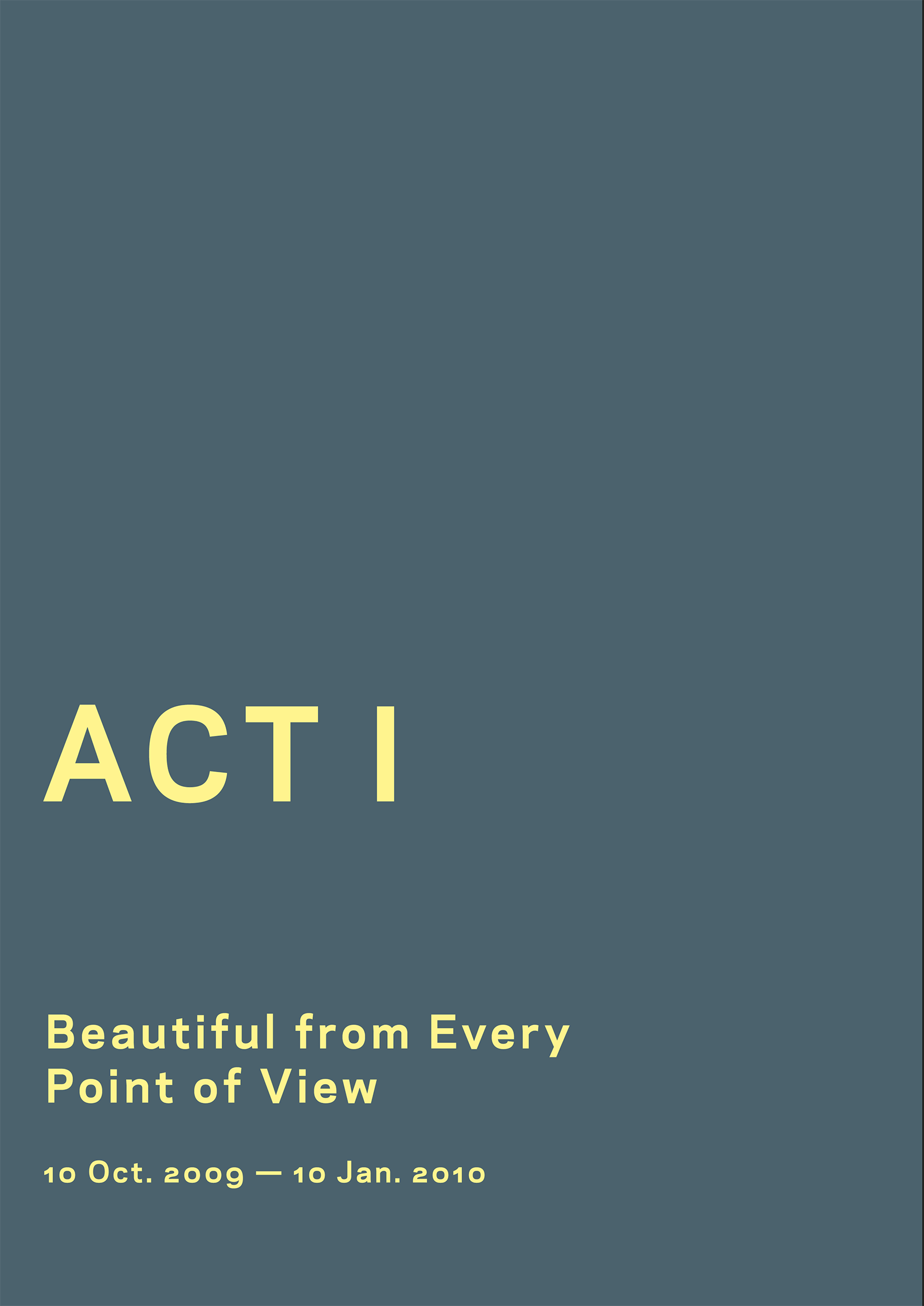
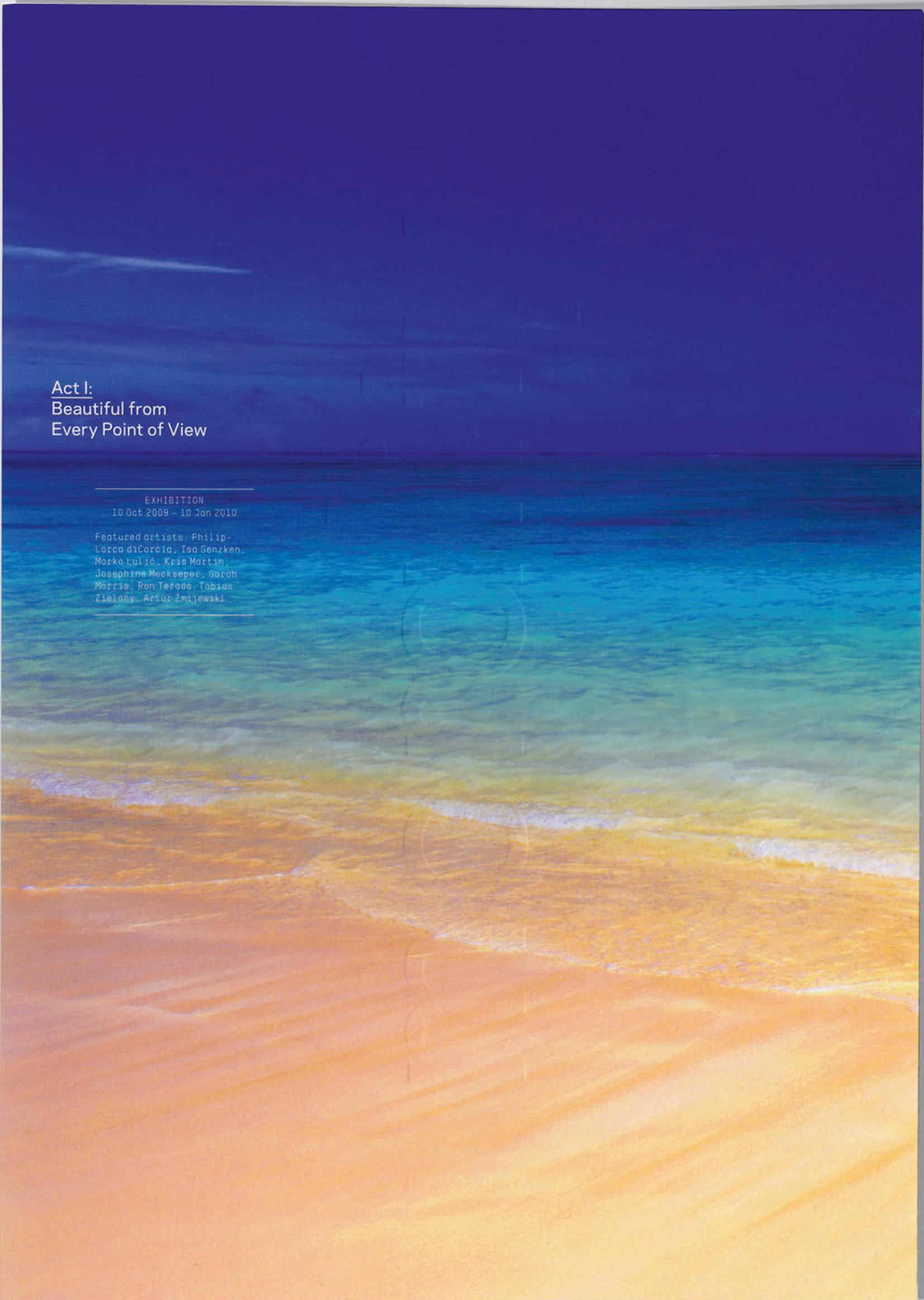

The title of Act I: Beautiful from Every Point of View derives from Horaces famous aphorism of the first century BCE, nothing is beautiful from every point of view. Not so long ago, under a regime of the imagination that took Truth and Beauty to be inseparable, this statement would have seemed incongruous. Today, however, Horaces sentence is little more than a platitude, increasingly deployed in a rhetoric, in which any point of view, and any action, can find its justification merely in its right to exist.
This first Act brought together a selection of works that refuse to assert an immediate, self-evident point of view on the subjects they represent. The works ranged from poignant simulations of the capitalist sublime, to humorous commentaries on the relationship between struggle and power, aiming at the grace that we inhabit between images and power.
Featured artists:
Philip-Lorca diCorcia, Marko Luli, Kris Martin, Josephine Meckseper, Sarah Morris, Ron Terada, Tobias Zielony, Artur mijewski.
Performances by Spartacus Chetwynd.
Curated by Juan A. Gaitn and Nicolaus Schafhausen, assisted by Anne-Claire Schmitz. Performance program curated by Renske Janssen.
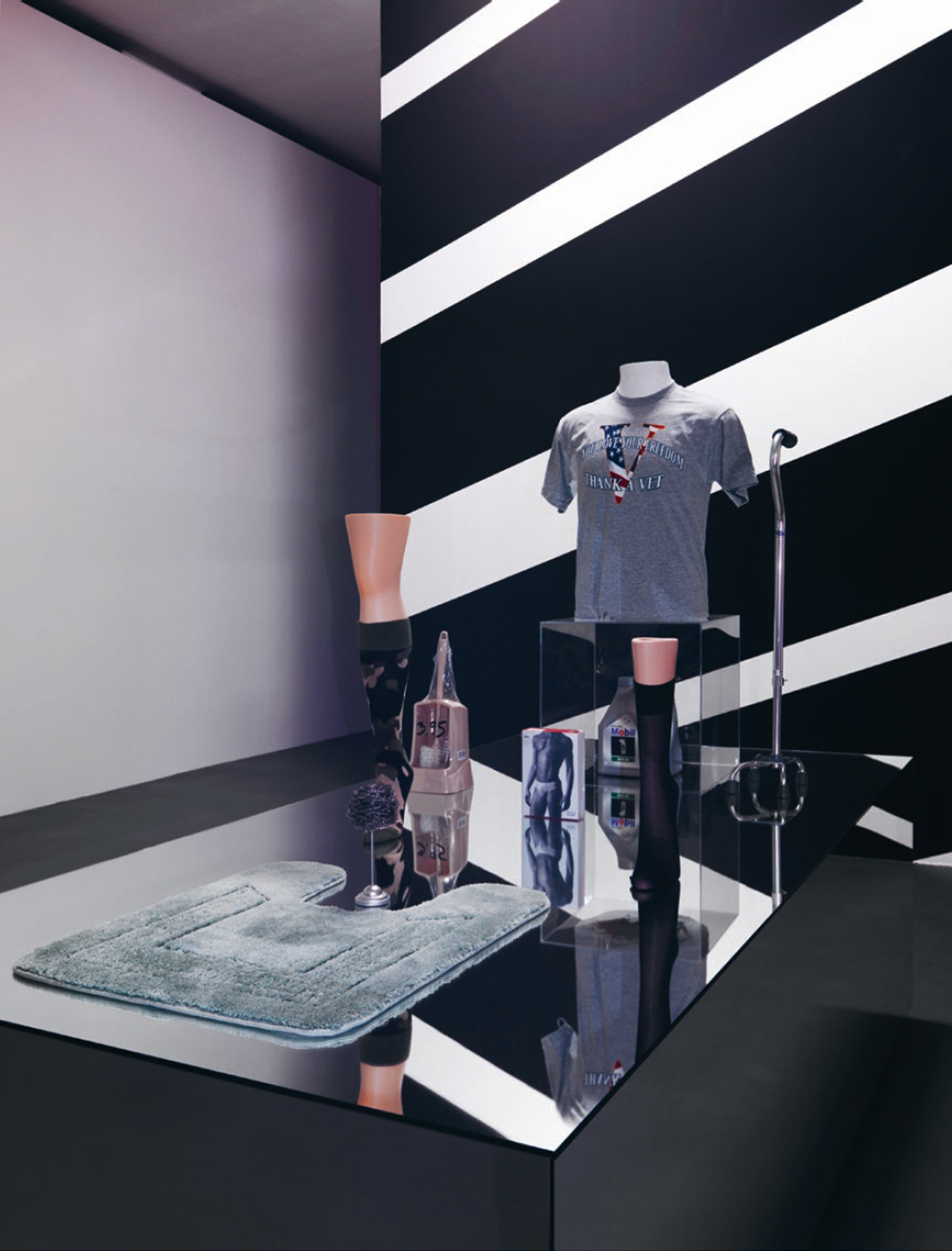
fig. I.1
Josephine Meckseper
Thank a Vet, 2008
Walker, mannequin legs, socks, toilet
mat, metal clip stand, steel wool, box
of underwear, toilet brush, mannequin
chest, T-shirt, motor oil container,
Plexiglas cube, 69 240 120 cm

fig. I.2
Josephine Meckseper
(left) Sanittshaus Hofmann No. 1
2007
Photograph C-print, 160 233 cm
(right) Nudorf Sanittshaus
Hofmann No. 2, 2007
Photograph C-print, 160 233 cm
Font size:
Interval:
Bookmark:
Similar books «Morality In Fragments»
Look at similar books to Morality In Fragments. We have selected literature similar in name and meaning in the hope of providing readers with more options to find new, interesting, not yet read works.
Discussion, reviews of the book Morality In Fragments and just readers' own opinions. Leave your comments, write what you think about the work, its meaning or the main characters. Specify what exactly you liked and what you didn't like, and why you think so.

